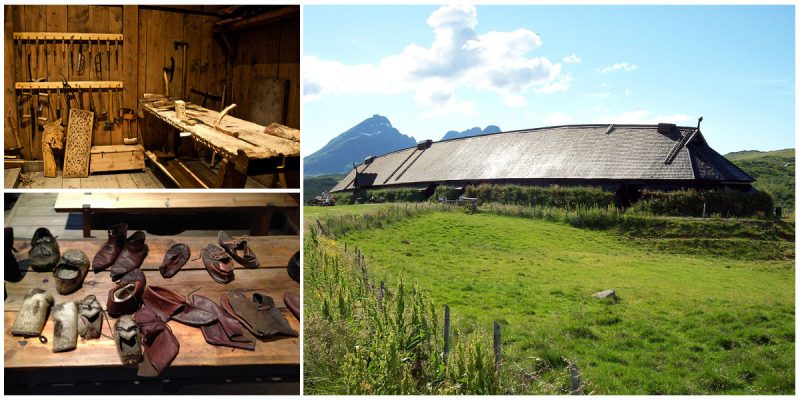In 1983, a joint Scandinavian research project was conducted in the small village of Borg, near the center of Vestvågøy, in northern Norway. During the excavation, researchers discovered a Viking building that belonged to one of the chieftains. It is believed to be the largest ever found. The 272-foot-long house was the seat of one of the chieftains, and it is the only such building found as of now.
In the 1990s, the residence was reconstructed in order for it to become part of the Lofotr Viking Museum. Historians believe the building was raised around 500 AD and abandoned around 950. The last chieftain who lived in the house was probably Olaf Tvennumbruni, who moved to Iceland because of a conflict with the other chieftains.
These events are described in a book called the Lándnáma Bok. It is believed that it was written around the 12th or 13th centuries, and the book describes the colonization of Iceland, including Tvennumbruni as one of the settlers from Lofotr (which is the medieval name for “Vestvågøy”). There is a detailed description of his family in the book, saying that he had three sons and he was married to Ashild.
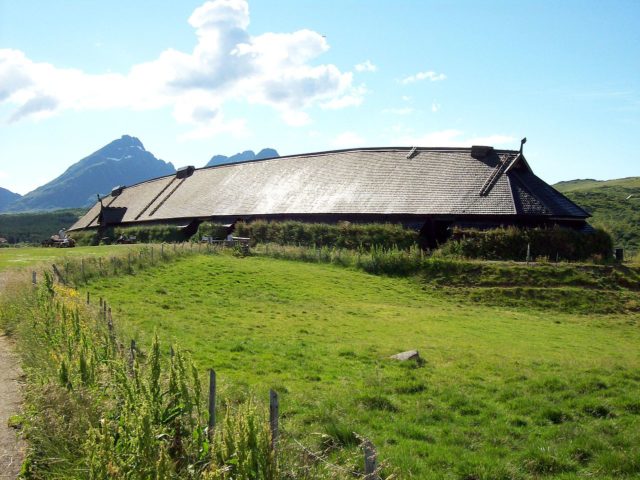
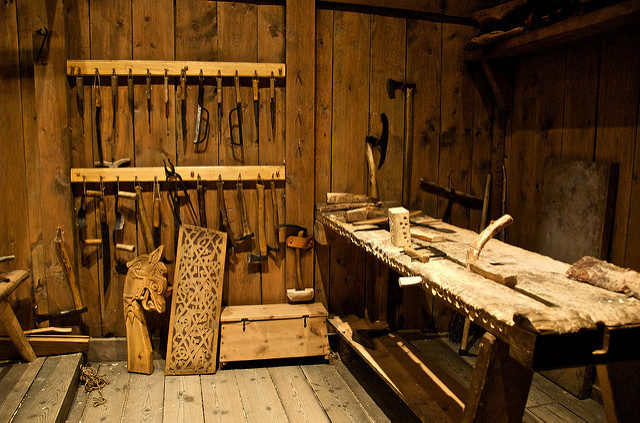
Today, as part of the museum, the house is a major attraction for visitors to enjoy traditional Viking food, see a precise reconstruction of two Viking ships, visit the blacksmith’s forge, and learn craft skills. The most enjoyable part is that, unlike other museums, people can touch the artifacts and every other object inside. Some guides are dressed as Vikings from 1,000 years ago and walk visitors through this amazing historical experience.
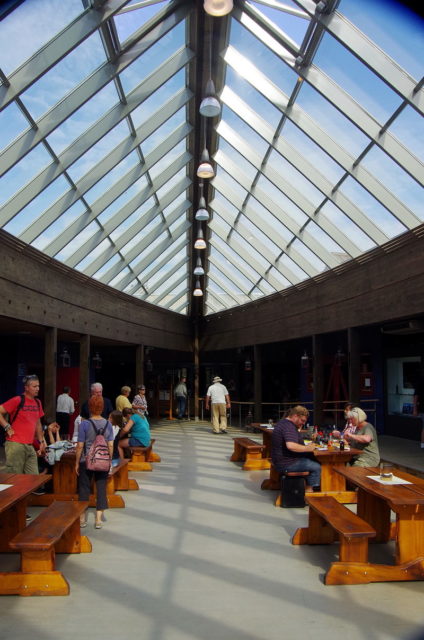
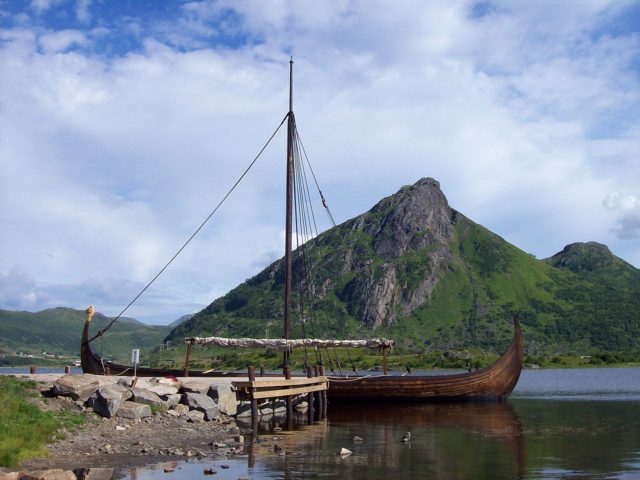
The banquet hall, which is shaped like an upside-down boat, is reserved for traditional food, as well as singing and dancing. In the summer a Viking ship, which is a full-scale replica of the Gokstad ship from the 9th century, can carry 90 people on the water. Close to Gokstad there is a smaller ship, and together they are known as Vargfotr and Lofotr. The museum also has a large barn, living quarters, and a storeroom for grain.
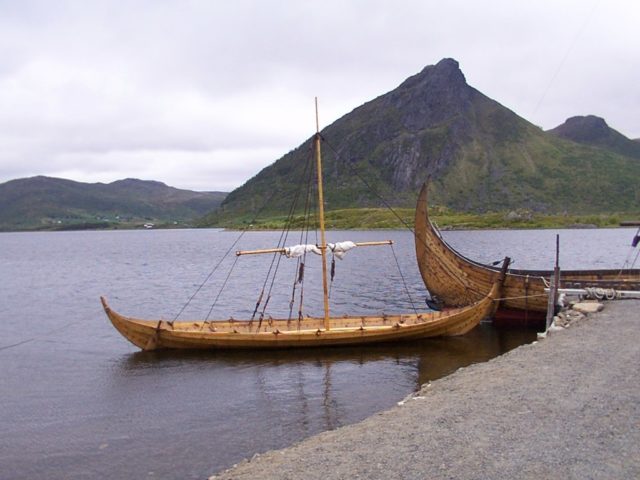
The interior of the living quarters is made to look as it might have in the year 800. Between the farm and the house, a sunken smithy was restored in 1997. Here, visitors can watch a demonstration of a Viking blacksmith’s craft and learn how the Vikings produced iron and charcoal. The barn was used to keep the animals warm through the winter, and today, various animals can be seen around it, including wild pigs, horses, and sheep.
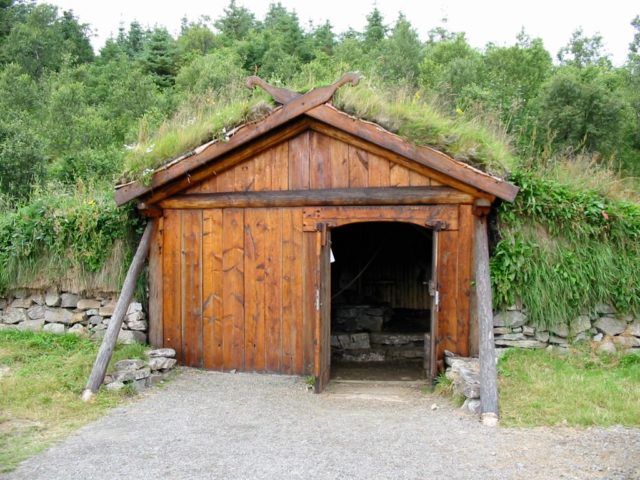
Since 2006, many additions and changes have been made at the museum, including the building of a large amphitheater between the house and the reception building. Several other buildings can be seen on the site, such as a film theater and two exhibition halls. In these halls there are various unique artifacts, and visitors can watch videos about the excavation of Borg.
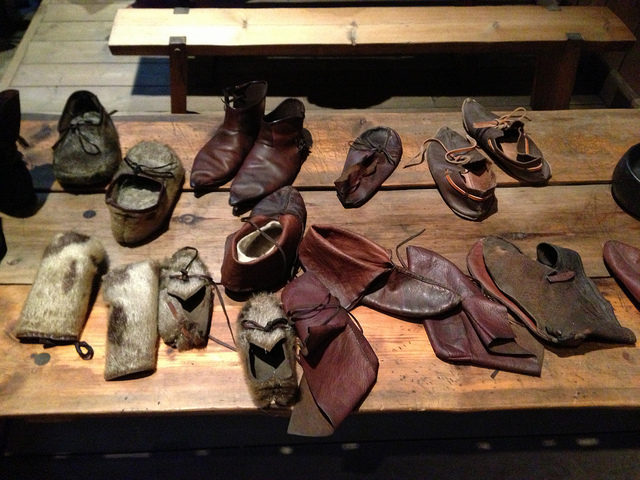
On the outside, around the museum, there are walking paths for visitors to explore the site more closely. The attractions are open from May until September. The museum was nominated for two awards in two years, firstly in 2011 for Museum of the Year in Norway, and second in 2013 for the European Museum of the Year Award.
Every August, there is a Viking festival in the village that lasts for five days and features many “Vikings” from Norway and other countries. During the event, various game shows, markets, competitions, and concerts are held.
